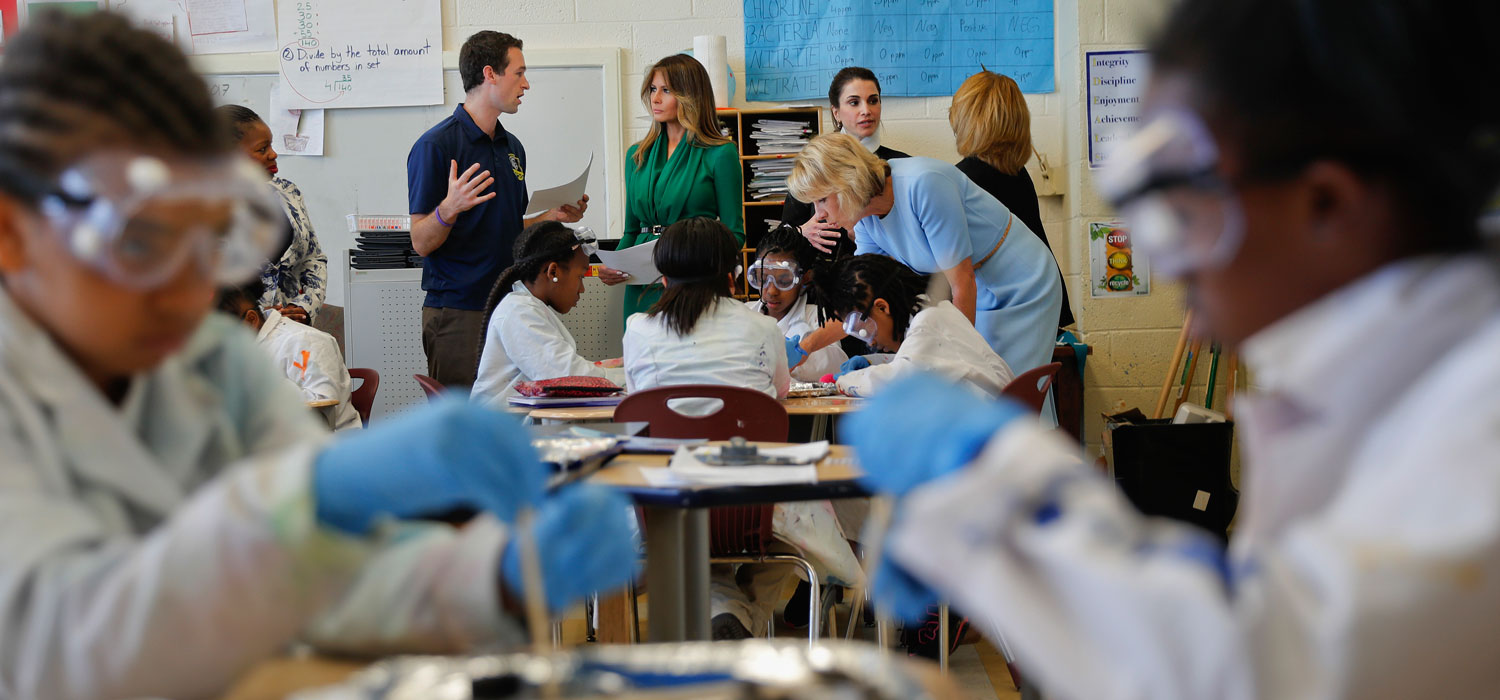
<p>First Lady Melania Trump, Queen Rania of Jordan and Education Secretary Betsy DeVos visit Excel Academy Public Charter School in Washington, DC on Wednesday, April 5, 2017. Mrs. Trump made her first foray in the neighborhoods of the city to highlight the Trump administration's focus on school choice. Photo by Pablo Martinez Monsivais/AP.</p>
School choice is at the center of the Trump administration’s education efforts, but policies that increase choice will only work if those choices are accessible to families.
The administration has yet to release a proposal for how the federal government might foster more school choice, but its initial budget proposal includes additional funding for charters, as well as funding for a new private school choice program. But based on findings from our new study, that funding might be better spent on promoting transportation to current choice options, rather than trying to spur growth in school choice policy at a national level.
Transportation can pose a real barrier for students, particularly those in low-income families. A study of families in Washington, DC, which does not provide yellow bus transportation to most students, found that parents were willing to choose an elementary school with proficiency rates up to 11 percentage points lower if the school was one mile closer to them.
Our study shows that nearly all US families have at least one potential “choice” school nearby—a public school in their district or a neighboring district, a charter school, or a private school—but access varies by family income and family location.
Some states and districts expand families’ options by allowing them to pick from traditional public schools, either within the district (intradistrict) or outside the district (interdistrict). The potential impact of these policies varies by district size and location. In a district with only one elementary school, for example, intradistrict choice has no impact. For families in a geographically large school district, interdistrict choice may be ineffective.
We find that intradistrict choice would give 95 percent of families in urban areas at least one more school option, but only 60 percent of rural families would gain a second choice within a 10-mile radius of home. Interdistrict choice would reach slightly more rural families than urban families within a 10-mile radius (74 versus 72 percent), but it would expand options for a smaller share of families below the federal poverty level than above it (63 versus 75 percent).
Allowing access to existing charter schools would give more low-income families at least one option over their neighborhood school, but this access is concentrated among families in urban areas. Sixty-eight percent of urban families have at least one charter school within 10 miles, but only 17 percent of rural families have the same choice. Allowing universal access to private schools (through a hypothetical voucher program with no restrictions on school or student eligibility) would similarly favor urban families over rural ones (95 versus 69 percent).
For these estimates, our goal is to provide baseline information on the locations of existing schools of different types relative to where students live. We assume choice policies would allow any family to attend any school they choose. In the real world, of course, important issues, such as school capacity and admission requirements, are additional barriers to access.
These data show that a national school choice policy will affect populations and regions differently. The Trump administration may want to move away from implementing school choice on a national scale and focus on supporting current local efforts. The most appropriate role for the federal government in that equation may be to provide resources—through competitive grant programs or funding formulas—that allow states to design policies that fit their local context or that provide reliable transportation for families to send their students farther to schools of choice.
Let’s build a future where everyone, everywhere has the opportunity and power to thrive
Urban is more determined than ever to partner with changemakers to unlock opportunities that give people across the country a fair shot at reaching their fullest potential. Invest in Urban to power this type of work.